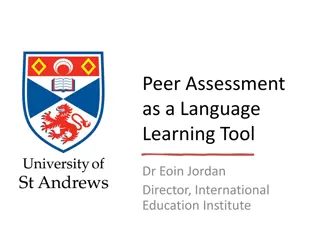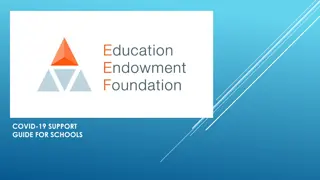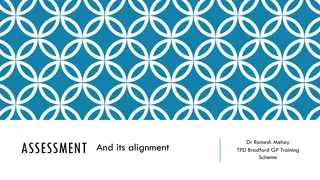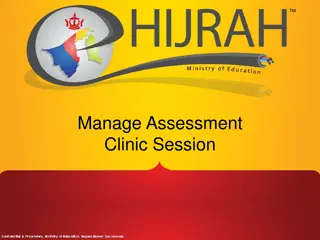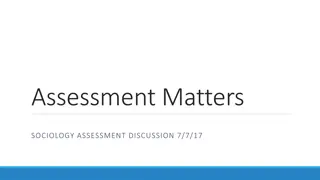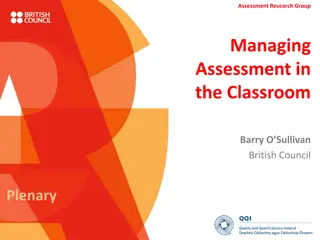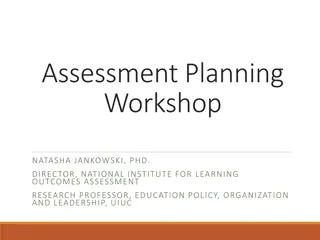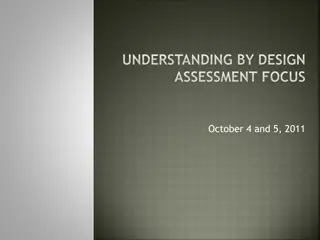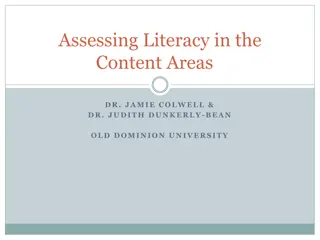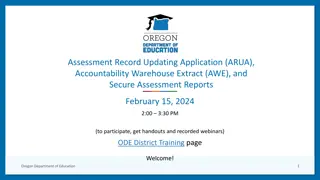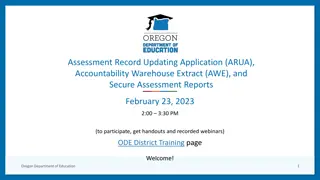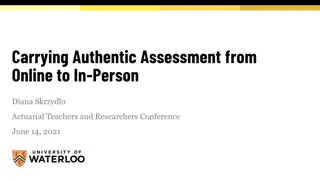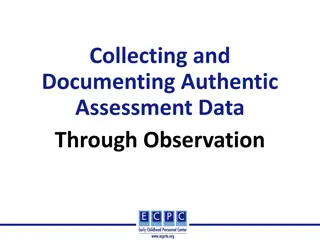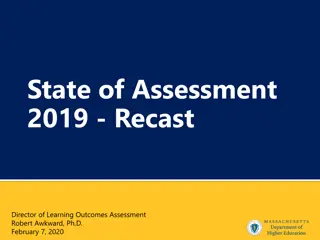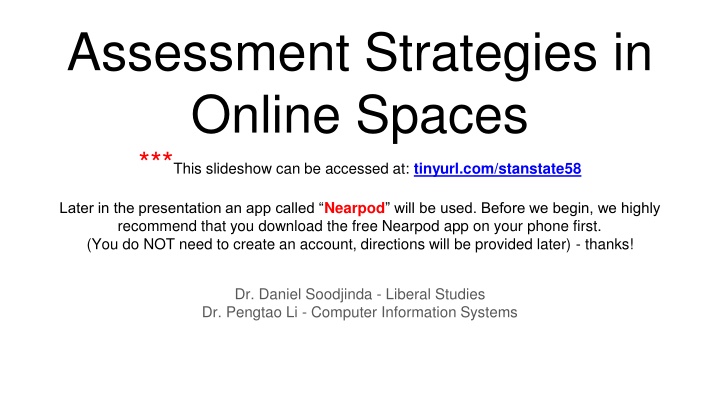
Effective Strategies for Online Assessment Planning
Explore key insights on assessment strategies in online spaces, including the importance of pedagogy over technology, choosing the right digital tools, different types of assessments, and methods for student knowledge demonstration. Get ready to enhance your assessment approach for a successful summer and fall semester.
Download Presentation

Please find below an Image/Link to download the presentation.
The content on the website is provided AS IS for your information and personal use only. It may not be sold, licensed, or shared on other websites without obtaining consent from the author. If you encounter any issues during the download, it is possible that the publisher has removed the file from their server.
You are allowed to download the files provided on this website for personal or commercial use, subject to the condition that they are used lawfully. All files are the property of their respective owners.
The content on the website is provided AS IS for your information and personal use only. It may not be sold, licensed, or shared on other websites without obtaining consent from the author.
E N D
Presentation Transcript
Assessment Strategies in Online Spaces ***This slideshow can be accessed at: tinyurl.com/stanstate58 Later in the presentation an app called Nearpod will be used. Before we begin, we highly recommend that you download the free Nearpod app on your phone first. (You do NOT need to create an account, directions will be provided later) - thanks! Dr. Daniel Soodjinda - Liberal Studies Dr. Pengtao Li - Computer Information Systems
Agenda Assessment Pedagogy first - Technology second Choosing the right digital tools for your summer and fall semester Examples of low stakes vs high stakes assessments Rubric development Project based assignment example Quizzes and exams via Blackboard Group presentations via Voicethread example General tips Additional resources
Pedagogy first - technology second Why are you assessing your students? Support and measure student and instructor presence Guide future instructional decisions Evaluate student understanding and mastery What do you want to assess? General course concepts Module or weekly learning objectives How do you want to assess your students? Low stakes assessment (informal) Examples: whole class synchronous discussions, short quizzes, small group or partner discussions, completion of an online form, set of problems from course textbook High stakes assessment (formal) Completion of a product, process, performance Examples: Major paper, culminating projects, unit exams, portfolios, lab write-up, presentation, performance How do you want your students to demonstrate knowledge? Written or oral response - Collaborative conversations - Recorded reflection - Creation of a multimedia product - Uploaded image??
Pedagogy first - technology second Making tech decisions for your summer and fall courses Choose one LMS to learn - Blackboard or Canvas Choose a productivity suite to learn (for documents, presentation tools, spreadsheets, cloud storage, forms, real-time collaboration) - Office 365 or Google Drive/Docs Choose one or two tools to learn - Voicethread, Padlet, Nearpod, Flipgrid, etc.
Why are you assessing your students? How will you do it? Support and measure student and instructor presence via low stakes (informal) assessments: Student inventory (to gather data about students first in order to make instructional decisions) Asynchronous discussion boards Synchronous whole class discussions via padlet, module question sign-up Small group activities and tasks via breakout rooms or individual zoom rooms, Student accountability via small group accountability form, reading accountability form Guide future instructional decisions Gathering informal assessment data (via google forms and spreadsheets) to find patterns in student understanding Evaluate student understanding and mastery via High stakes (formal) assessments Larger projects (case studies, research papers, essays, etc.) Using the rough draft - feedback - final draft framework via Google Docs Student self-assessment Rubric development (ex: analytic rubric for a lesson plan activity) - See next slide to learn more about rubrics via Nearpod!
Rubric Development Rubric slideshow via NearPod It s BEST to use your phone with the nearpod app installed - however, you can also simply use your phone s web browser, or open another tab on your computer. Lesson plan analytic rubric - full
Formal Assessment - might not learn as much) Important for learning (without assessment, students - Important to students (grading) - Important to instructor (feedback)
Some Considerations of Assessment - Spread out the stakes, reduce the weight of exams (release the stress/pressure), Balance the workload and effectiveness - Number of assessments - Automatic grading (multiple-choice, or peer-grading, submission) Give clear instructions (due day/time, late submission policy, format requirement) - -
Formal Assessment - Quiz - - Discussion Board (Participation) - Set up - Grading Homework & Lab - Setup - Grading Exam - Integrity Concern For synchronous classes: Partly attendance stimulation, partly assessment For asynchronous classes: evaluate learning of knowledge - - -
Formal Assessment (cont.) - VoiceThread (group work) - Audio/video-based interactive slideshow - Introduction (ice-breaker) - Case analysis - Group presentation (peer-evaluation: Google Form) Turnitin (writing assessment) - Setup - Similarity rate (15% or lower) -
General tips Assessment doesn t always have to be a word document Let the learners choose their own medium to demonstrate knowledge (or provide a range of choices) When planning an assessment, think about your course goals and weekly or module learning objectives FIRST, then think about the assessment Utilize assessment outcomes to drive instructional decisions Create assessments that support higher order thinking Think about the workload that is involved when assessing your students Do not get obsessed with student cheating - it will drive you crazy. Review the recorded meeting about academic integrity!
Additional resources Directory for learning and performance tools Crowdsourced collection of online resources Synchronous online resources Interview about book, Assessment Strategies in Online Learning
Thank you! Daniel Soodjinda, Ed.D. Associate Professor of Liberal Studies and Teacher Education dsoodjinda@csustan.edu 202.230.7063 mobile Pengtao Li, Ph.D. Professor of Management Information Systems pli1@csustan.edu


